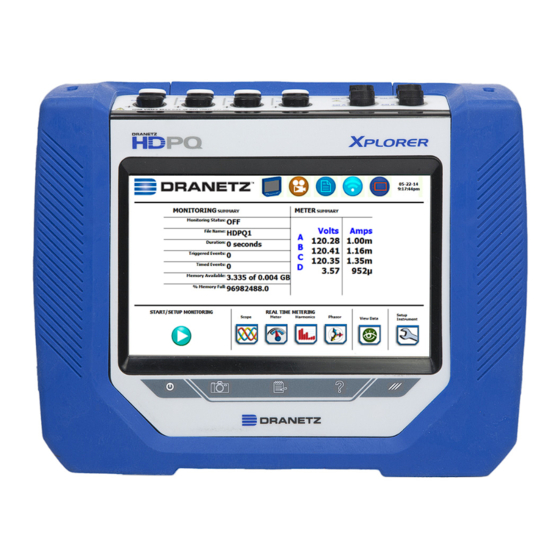
Table of Contents
Advertisement
Quick Links
/
/
Quick Reference Guide
For the Dranetz HDPQ Xplorer / Xplorer 400 / Guide / Visa product family.
It is recommended that the user still be familiar with the complete User
Guides for the respective products, as it contains more detailed
information about all of the functions, as well as the specifications and
accessories.
Dranetz
1000 New Durham Road, Edison, New Jersey 08818
Telephone 1-800-372-6832 or 732-287-3680
Fax 732-248-1834
www.dranetz.com
Advertisement
Table of Contents





Need help?
Do you have a question about the Xplorer and is the answer not in the manual?
Questions and answers